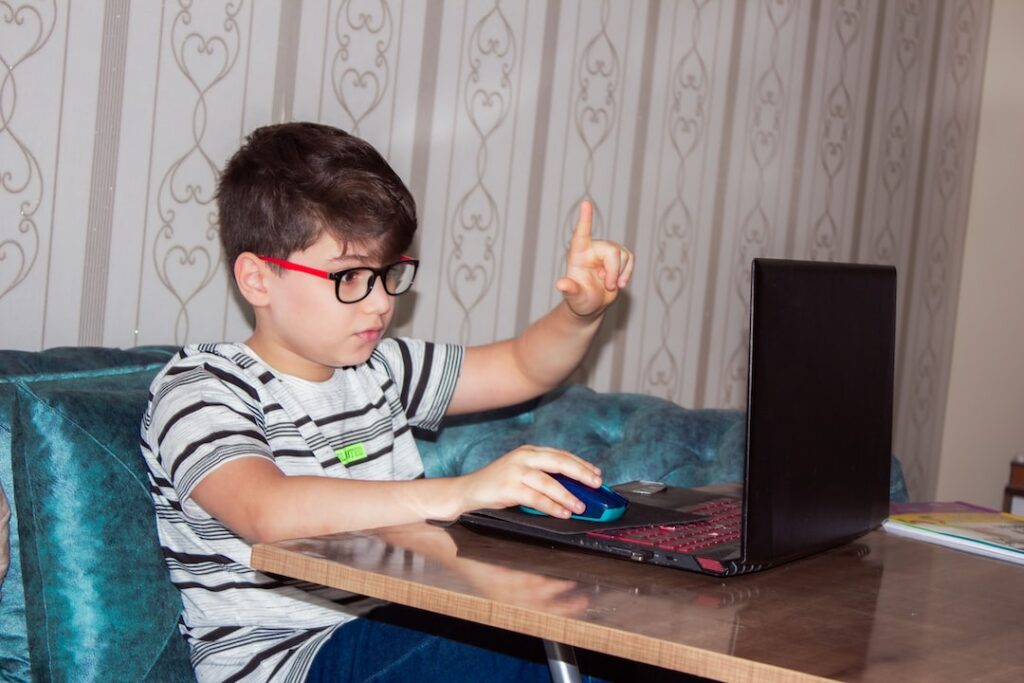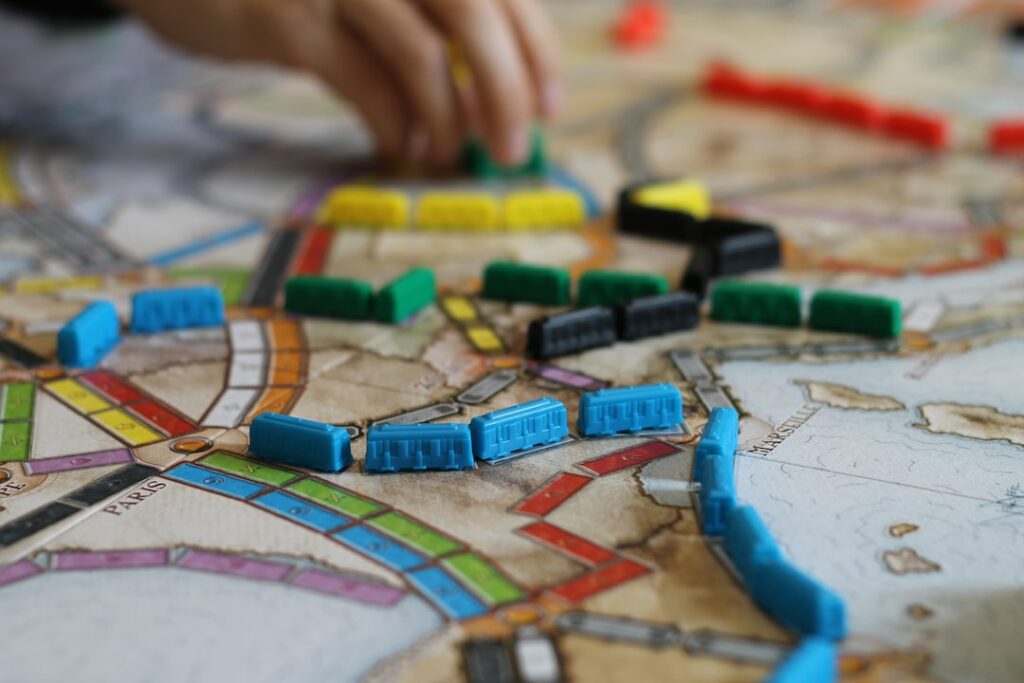Ever wondered about the difference between game-based learning and gamification? Both are buzzwords in today’s educational field, and it’s important to know the difference because they’re not interchangeable.
Imagine you’re learning through an actual game, where you’re actively engaged, and your success hinges on mastering certain skills or knowledge. That’s game-based learning. Now, picture a traditional class, but your achievements are rewarded with experience points, badges, or your name topping a leaderboard. That’s gamification.

Both methods aim to make learning more engaging and fun, but they do it in different yet similar ways.
This article will delve into what sets game-based learning and gamification apart, how they’re applied, their role in classrooms and society, and the research behind them. Buckle up, it’s going to be an enlightening ride!
What is Game-Based Learning?
Game-based learning involves incorporating games into educational content to reach the desired learning objectives. It helps in enhancing the learning experience of students by providing a fun and interactive way for students to learn and apply knowledge. Unlike gamification, which may have various aims, the main objective of this method is for you to learn the content within the game.
Benefits and Limitations of Game-based Learning
The benefits of game-based learning are significant. This is the place where games and learning go hand and hand. It taps into learners’ innate motivations and provides a powerful, interactive way to facilitate active learning. Games can be highly engaging and can effectively tap into learners’ interests and motivations.
While game-based learning can dramatically increase student engagement and foster skills such as problem-solving and critical thinking, it’s not without its challenges. Potential distractions, costs, and the need for careful integration into curriculum and assessment are some of the details educators need to take note of when implementing this strategy.
Additionally, one known limitation of this approach is the need for technology access. Not all students may have access to the necessary devices or internet connection to participate in game-based learning activities. This can create inequalities in the learning experience.
Another limitation is the potential overemphasis on extrinsic rewards. Games often use rewards and points systems to motivate students. While this can be effective in the short term, it may lead to a focus on earning rewards rather than on the actual learning process.
Not all content can be effectively delivered through games, and the costs associated with tools and equipment can be high. Additionally, digital games can be extremely engaging but can also be distracting. Educators must strike a balance between on-screen activities and traditional learning, ensuring that the game content aligns with learning objectives.
Application Of Game-Based Learning
Game-based learning offers a dynamic approach to learning. It provides a type of active learning that uses game elements in an educational setting. Teachers can create and use education-oriented games and apply certain learning objectives and measurable outcomes to their students. The game design may include traditional learning strategies embedded within the game framework to provide the users with a powerful learning environment. This method shows a positive influence on students’ retention and recall rates, as the integration of game mechanics makes them more motivated and focused on the tasks.
By using games to improve learning, you can craft an immersive learning experience. Games can be tailored to suit any learning objective, making them a flexible tool for teaching. They also encourage active participation, so learners aren’t just passively absorbing information.
The Use of Game Mechanics in the Classroom
Game-based learning in the classroom is one activity that can transform your teaching approach. By integrating games into lessons, you’re allowing students to interact with the material in a more active way.
Just think about it, as a learner, wouldn’t you retain information better if you’re actively involved in the learning process? Game-based learning adds an element of fun to the classroom, making lessons more enjoyable and memorable. It also fosters a more collaborative environment, encouraging students to work together to solve problems and reach goals.
Plus, games can provide instant feedback, allowing learners to understand where they’re going wrong and how they can improve. It can transform a dull learning experience into an exciting adventure.
Moreover, specific types of games can help teachers aim for a skill they want their students to learn. For example, puzzle games can allow students to develop valuable skills such as critical thinking and problem-solving. Simulation games can also enable students to apply their knowledge in real-world scenarios, which can enhance their understanding of the subject matter.
Elearning: Use Games To Improve Online Learning

In an online setting, the learning journey takes a new, interactive form that can easily keep students engaged with the subject matter of a topic. This is called electronic learning or elearning. This is when the educator places the traditional classroom setting on the Internet in the form of an online course, easily accessible for students in the comforts of their own homes. Teachers can create new content and apply them to an online game to facilitate online training (and teachers can make these games on their own using a platform that’s easy to understand). Teachers can also provide certain types of training using the learning tools of an app or website that trains students in new skills and enables them to put these specific skills into practice without real-world implications.
What is Gamification?
In its simple terms, the definition of gamification refers to the application of game elements to a nongame setting. Gamification uses game mechanics and integrates them into the tasks, turning them from being mundane to a more enjoyable experience. You can potentially increase engagement and motivation by simply applying game mechanics in a non-game context — that is the beauty of gamification.
There are various forms of gamification. These can vary based on the needs of your organization. For example, you can use gamification in sales to optimize your performance and enhance return on investment. You can even employ the wonderful use of gamification in tourism!
Gamification can provide various institutions and businesses with new and innovative ways to enhance user experience.
Game Elements in Gamification
There are various elements that can be incorporated into your \strategy to make the user experience more engaging and interactive. These game elements may be familiar to you regardless of the game you play; whether it be serious games available on gaming consoles or more traditional games like board games and card games.
Gamification integrates the following elements to make fun and engaging tasks that users would love.
- Progress bars visually highlight a student’s advancements, giving them a sense of achievement.
- Badges, on the other hand, serve as rewards, boosting motivation and commitment.
- Boss battles represent real-world challenges, adding a sense of competition and accomplishment.
- Lastly, simple arcade games can be excellent stress-busters while also enhancing focus and concentration.
Adding game elements to your lessons is made easier with apps like Aribo, allowing you to create interactive experiences without needing coding skills.

The Power and Limitations of Gamification
The power of gamification lies in its ability to motivate users and create a sense of achievement. It can incentivize learning and create a rewarding environment. However, it is important to recognize the limitations of gamification as well.
One limitation is that gamification runs the risk of overshadowing the actual content. If the game mechanics become more appealing than the knowledge gained, then the focus shifts from learning to winning.
Another limitation is that tokens of achievement like badges and leaderboards can validate learners’ efforts, but they can also fuel unhealthy competition and stress.
Therefore, it is crucial to balance game elements with the objectives. The key is to use gamification as a tool to enhance learning, not replace it.
Application Of Gamification

One popular use of gamification is in the workplace setting. Gamification applies game elements that can make your work more exciting and rewarding, encouraging you to push yourself and achieve more. Imagine turning your everyday tasks into a competitive game with levels, progress bars, and point systems, all aiming to motivate you to perform better and engage more deeply with your responsibilities.
The use of gamified elements in corporate training can break down complex concepts into manageable steps and provide an interactive platform for learning. Leaderboards and point systems not only track your progress and performance but also foster a healthy sense of competition amongst colleagues.
This leads to an increased understanding of your work and industry, making you more efficient and effective in your role.
Moreover, gamification in customer service can significantly enhance customer engagement and satisfaction rates, fostering loyal relationships. Transforming customer service processes into interactive and customer-centric games improves the overall experience for both you and the customer.
Key Difference Between Game-Based Learning And Gamification
So, what’s the difference between these two? Well, while these two strategies are similar in many ways, they vary in their application, purpose, and impact on the user experience.
Game-based learning is an active process where the game itself is the learning experience. It’s designed with specific learning objectives and provides informative feedback on your performance.
On the other hand, gamification involves adding game elements, such as badges and leaderboards, to traditional instruction to boost engagement. Unlike game-based learning, gamification separates the game elements from the learning content.
While both can enhance your learning and overall experience, it’s important to note that game-based learning harnesses your intrinsic motivation and love for play, whereas gamification may lean more toward extrinsic motivation.
Understanding these key differences can help you choose the right approach for your learning needs.
Game-Based Learning Research
Diving into the scientific research behind this approach, it’s fascinating to see how play-based teaching strategies can significantly bolster student engagement and problem-solving skills. Research shows that using game-based learning has a direct correlation between motivation, engagement, and student achievement. This suggests that when students are engaged in their learning through games, they’re more likely to stay motivated and excel in tackling complex problems.
Another study supports the idea that using educational games is directly related to increased performance of students compared to traditional practices.
One branch of education that greatly benefits from gamified learning is language learning since it involves a lot of memorization and interaction to be taught properly (source). The game components can be modeled to enhance a student’s ability to learn definitions and remember certain words and key phrases. They’re engaging with it, applying it, and learning the language in a dynamic way.
These studies all aim to further understand how game-based learning helps in education. They all point to one conclusion. In a classroom setting, game-based learning can lead to improved learning outcomes. It makes learning interactive and fun, which can help improve retention and understanding.
In this setting, learning takes a fun form. It’s about harnessing the power of play to create an effective, engaging learning environment. Remember, the key is to align the game elements with the learning content and objectives. That’s when you’ll see the real magic happen!
The Role of Game-Based Learning and Gamification in Society
The role of gamification and game-based learning in society is striking. Despite the difference between gamification and game-based approaches, both have deeply impacted our society, transforming the way we approach education, employee training, health and wellness programs, and even marketing strategies. The debate of game-based learning vs. gamification is a hot topic. Both have proven effective in different contexts, providing a playful, engaging environment that promotes learning and behavior change.
When looking at the role of gamification and game-based learning in society, we see the profound effects they have on people’s motivation and engagement. Gamification is fast and inexpensive. Through its game mechanics, like points, badges, and leaderboards, it has found its way into corporate training, health apps, and advertising campaigns. It’s all about leveraging our love for competition and achievement.
On the other hand, game-based learning uses the entire game as a learning process. It’s not just about winning or earning points; it’s about problem-solving, innovation, and critical thinking. From classrooms to corporate training rooms, game-based learning fosters a deeper understanding of complex concepts.
While they are not universally applicable, with careful planning, they have the potential to revolutionize how certain institutions work. Balancing fun and learning is key to their success. Ongoing research and emerging technologies offer promising opportunities for further advancements in this field. Collaboration between educators, game developers, and researchers is crucial in realizing the full potential of these approaches.
So, whether it’s gamification or game-based learning, both strategies have become a significant part of our learning culture, contributing to the way we learn, work, and interact.
